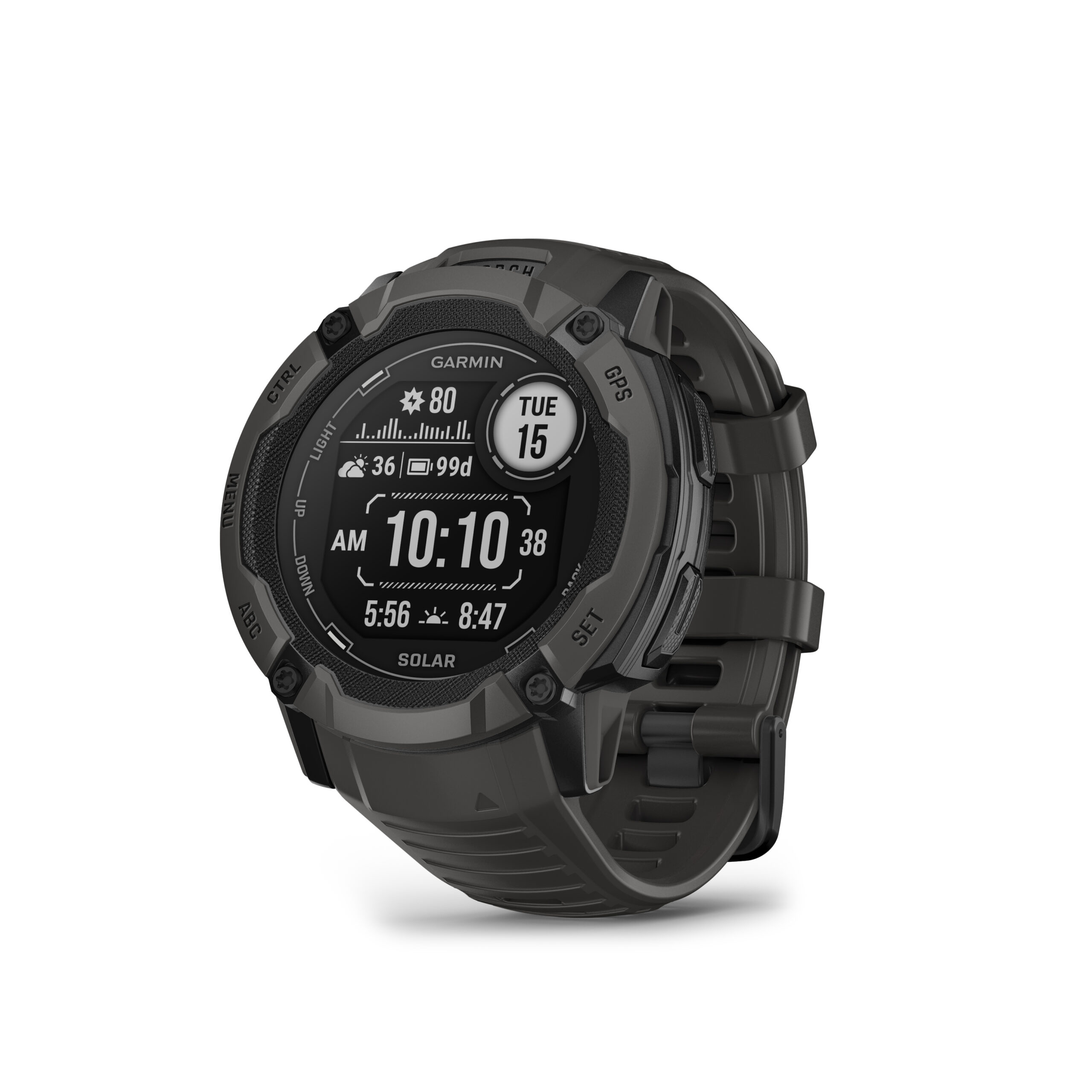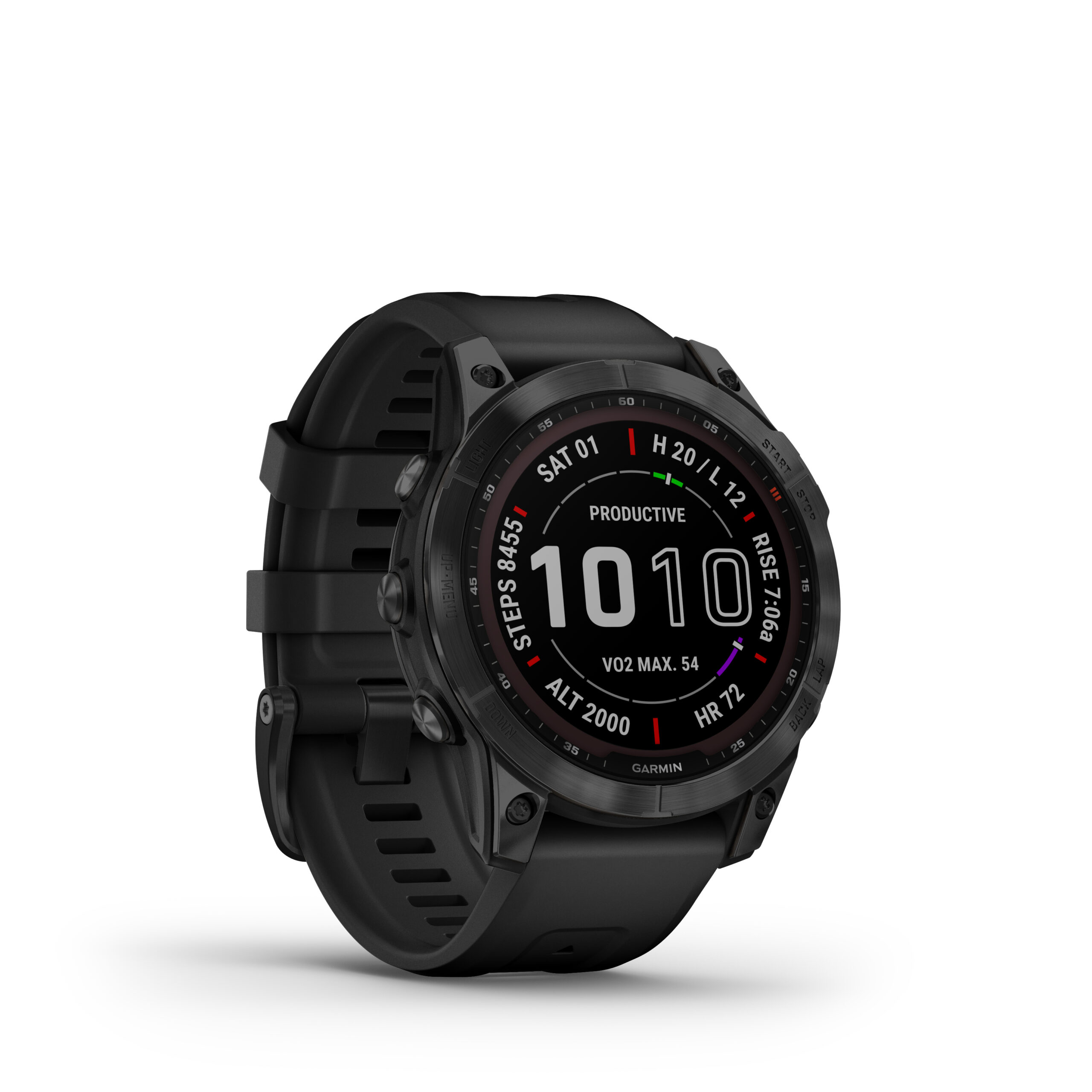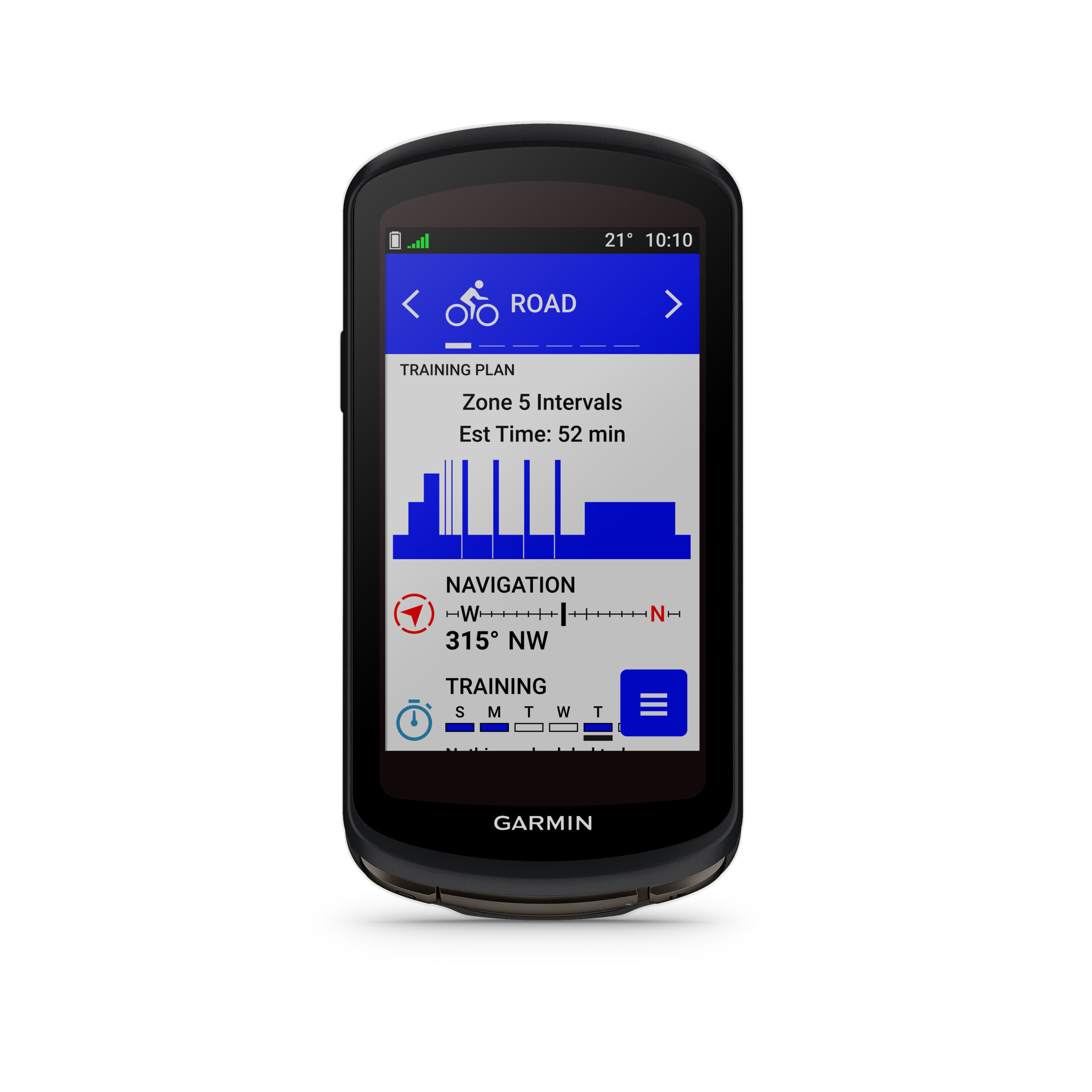
Solar Charging in Garmin Smartwatches
What are the benefits of a watch with solar charging capabilities, and how does it work? Let’s break it down.
The battery life on Garmin smartwatches last a long time — we’re talking measurements of days and weeks rather than hours. And with solar charging available as an additional benefit on select Garmin smartwatches, you may even be able to measure your battery life in months.
How Does Solar Charging in a Smartwatch Work?
Solar charging is made possible by a single semitransparent layer of solar cells that are bonded between the glass and the display of the smartwatch. This layer, which consists of two different densities of solar traces, collects energy from the sun and converts it into electricity to provide a charge to the battery.
You may not even be able to tell that a smartwatch has a solar component to it. The solar panel is see-through and stretches across the entirety of the watch face display to attract solar energy, giving you that extra boost of charge if needed.
The solar-charging technology features either Power Glass™ or Power Sapphire™, strategically placed between the watch’s display and the cover lens. For the Power Sapphire lens, the solar component is protected under a solar-powered sapphire layer, the second-hardest transparent material to diamond.
Fun fact: Solar charging was first launched in a Garmin device in 2019 within the fēnix® 6 series.
What Are the Benefits of Solar Charging for Smartwatches?
The main benefit is battery life. Solar charging gives you the power you need to take advantage of your time outside, extend your battery life and, ultimately, do what you love longer.
While not intended as the primary charging source, solar intensity is prominently displayed on the watch face or the solar intensity widget, indicating the amount of sunlight received. This feature is beneficial for those who relish outdoor activities because it extends battery life with no effort. The solar charging is subtle and seamlessly integrated without compromising the watch’s functionality.
On compatible cycling computers, such as the Garmin Edge® 840 Solar and Edge® 1040 Solar, solar energy translates into tangible metrics, such as “ride gained,” offering riders a clear understanding of the solar component’s impact — approximately 20 extra minutes of battery life for every hour of riding with solar.
With our Instinct® 2 Solar and Instinct® 2X Solar series, you may be able to reach unlimited battery life. You’ll notice an infinite symbol in place of the number of days left on your smartwatch.
Worried about viewing your watch face in direct sunlight? No need. Garmin solar powered smartwatches employ memory in pixel display technology, which enhances readability in direct sunlight without the need for a backlight.
And if you simply forget to charge your watch before you head out for an adventure and it eventually dies, you can leave your watch out in the sun, and it will power back on.
Which Garmin Products Have Solar Charging?
Solar charging technology has been incorporated within the following product lines:
Getting the Best Solar Charge
To maximize your solar-charging experience, ensure the lens or screen directly faces the sun. Wearing the device with the lens exposed to sunlight, outside your sleeve, enhances solar absorption. It’s important to note that solar charging complements your device’s battery life but isn’t designed to replace primary charging sources.
Weather conditions and sun positioning may impact charging efficiency.
So now that you have a better idea of how solar charging works, take the first step toward pursuing your passions by exploring Garmin smartwatches with solar-charging capabilities.







